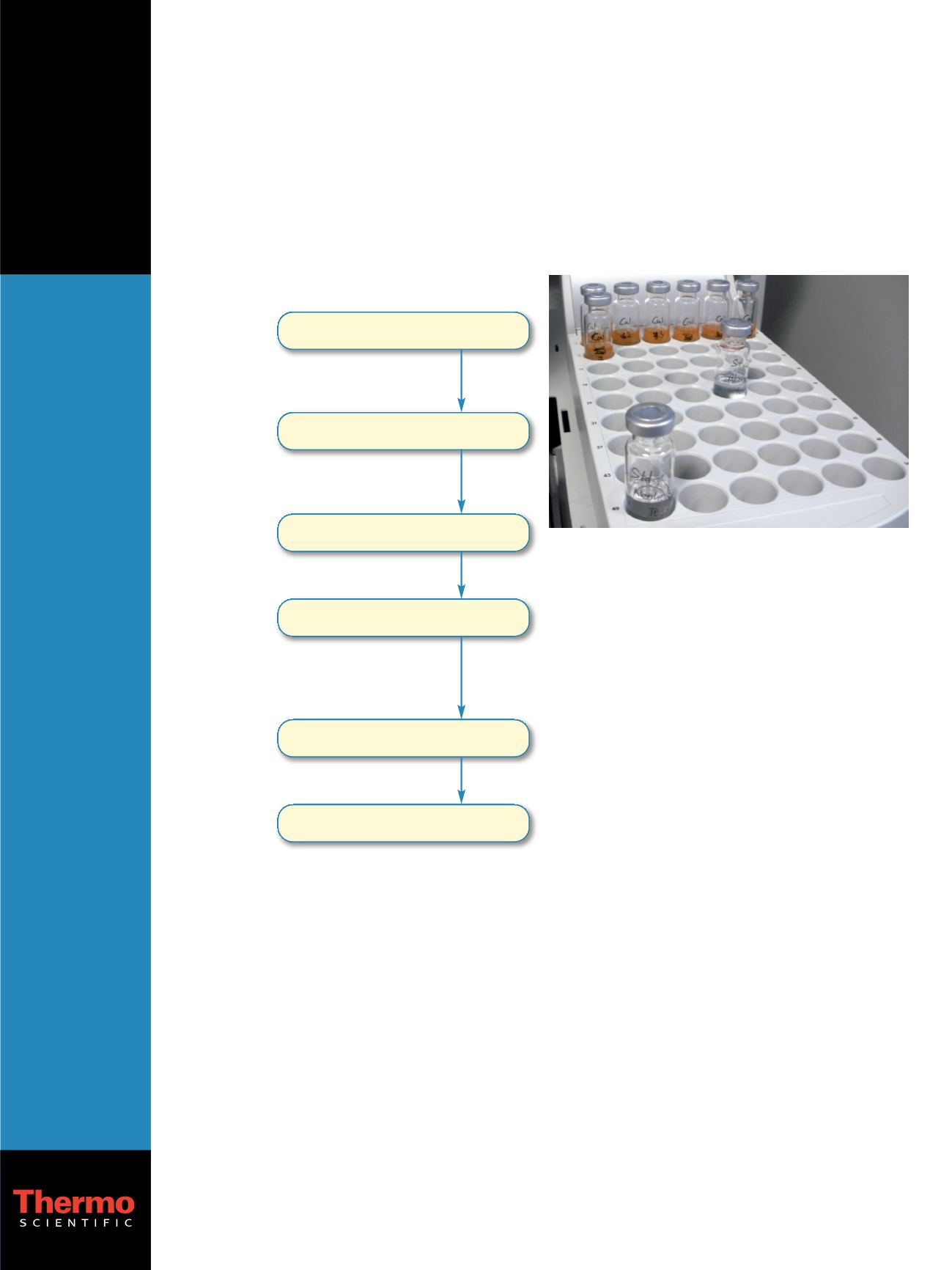
1. Schematic of Method
2. Introduction
Despite a history of use in foods and beverages, some plant
extracts are now regulated in the EU
2
and some, such as
safrole, are banned from direct addition to foods in the U.S.
3
European Regulation 1334/2008
2
stipulates that 15
flavoring substances are banned from direct addition to
foods or beverages in their chemically pure form. These
flavoring compounds are agaric acid, aloin, capsaicin,
coumarin, hypericine,
β
-asarone, estragole, hydrocyanic acid,
menthofuran, methyleugenol, pulegone, quassin, safrole,
teucrin A and
α
and
β
-thujone. Ten of these substances
are permitted in food and beverages at stipulated levels,
but only when they are naturally present in flavorings and
food ingredients.
2
The stipulated foodstuffs cover a wide
range of physical and chemical composition such as liquids
(spirit drinks and non-alcoholic beverages), semi-solid
foods (soups, sauces and desserts) as well as solid foods
(confectionery, chewing gum, fish, meat, bakery products
and breakfast cereals). Without methods that can be routinely
applied by the food industry, it is very difficult to control
final levels of these flavoring substances in finished products,
especially due to their high variability in levels between
different plant species.
Headspace analysis is a very attractive methodology
for analyzing volatiles, because it requires minimal sample
preparation and can be automated. Of the headspace
methods, solid-phase micro-extraction (SPME) is now
probably the most widely used method in food analysis,
offering many benefits over other headspace techniques.
4
Although SPME is very well established for the analysis of
flavorings, published methods have focused on individual
food classes and no publications have truly tackled the issue
of providing methodology for enforcement of regulations
to control biologically active flavoring principles.
This publication describes a SPME method, utilizing a
generic approach based on three categories of food types
which has been optimized for the simultaneous determination
of seven volatile flavoring substances whose levels are
controlled in EU
2
in specified foods.
3. Scope
This method can be applied to alcoholic and non-alcoholic
beverages, semi-solid processed foods and solid foodstuffs
to detect and quantify the presence of seven biologically
active flavoring substances (coumarin,
β
-asarone, estragole,
menthofuran, methyl eugenol, pulegone and thujone) at
levels ranging from 0.5 to 3000 mg/kg.
Key Words
• TSQ Quantum XLS
• Beverages
• Biologically
Active Flavorings
• Semi-Solid Food
• Solid Food
• Solid-phase
Micro-extraction
Method: 52147
Sample Homogenization
Sample 2.0 mg + IS
Adding of Water
Adding of 2.5 g NaCl
SPME Automatic Device
GC-MS/MS
2.
Add to the headspace vial 9980 µL of water or
fill up to the mark on the volumetric flask
1.
Weigh 100 mg of homogenized sample to the
headspace vial or volumetric flask
3.
Add to the sample 2.5 g of NaCl
4.
Tightly cap the vial with an open top closure
with Butyl/PTFE septa
5.
Place the vial to the Autosampler of GC-MS/MS
6.
Automatic SPME process
A Solid-phase Micro-extraction GC-MS/MS Method for
Rapid Quantitative Analysis of Food and Beverages for
the Presence of Restricted Biologically Active Flavorings
1
Katerina Bousova, Klaus Mittendorf, Thermo Fisher Scientific Food Safety Response Center, Dreieich, Germany


